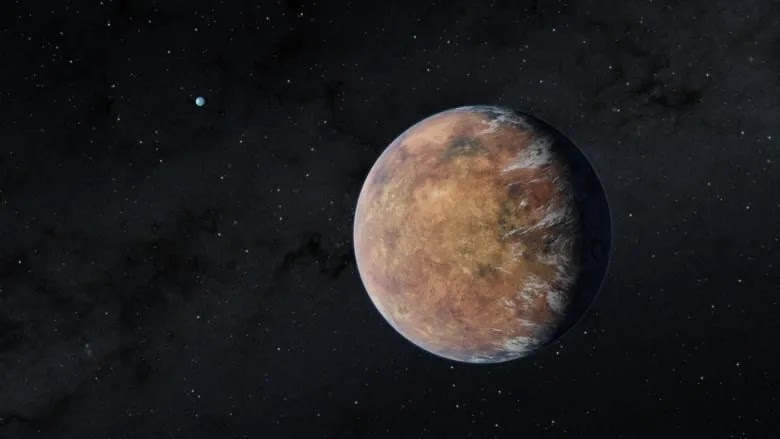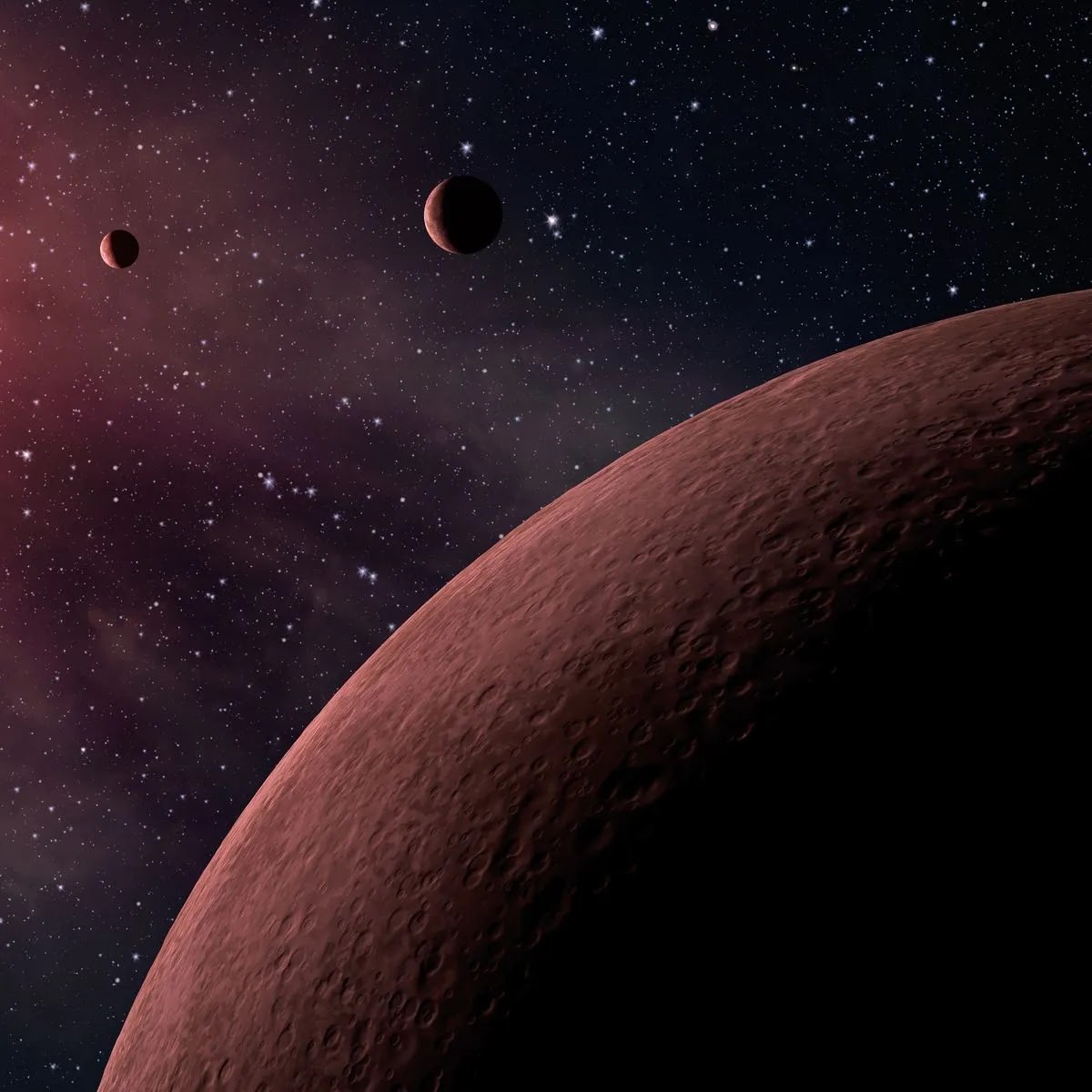Super Earth: Exploring the Fascinating World of Exoplanets
Super Earth: Exploring the Fascinating World of Exoplanets
In the vast expanse of the universe, the search for habitable planets beyond our solar system has captivated the imaginations of scientists and enthusiasts alike. Among the countless exoplanets discovered, one intriguing category stands out: the Super Earths. These celestial bodies, larger than our own planet yet smaller than gas giants like Jupiter, offer a unique opportunity to study the diversity and potential for life in the universe. In this article, we will delve into the fascinating world of Super Earths, exploring their characteristics, discovery methods, and their significance in the search for extraterrestrial life.
What is a Super Earth?
Super Earths are exoplanets that have a mass higher than Earth's but lower than that of gas giants like Saturn and Jupiter. Typically, they fall within the range of 1 to 10 times the mass of Earth, and their sizes can vary considerably. Some Super Earths may have a rocky composition similar to Earth, while others may possess a substantial amount of water or even a thick hydrogen-helium envelope.
Characteristics and Challenges:
Due to their diverse nature, Super Earths present a range of characteristics that make them intriguing subjects of study. Their larger size and stronger gravitational pull can lead to higher atmospheric pressures, which could result in unique weather patterns and geological features. The higher mass also affects the planet's internal structure, potentially leading to increased volcanic activity and tectonic movements.
However, the conditions on Super Earths may present challenges for the emergence and sustenance of life as we know it. The higher gravity could create a thicker atmosphere, trapping heat and making the surface inhospitable. Additionally, the presence of a hydrogen-helium envelope might give rise to extreme temperatures and atmospheric conditions that would make it difficult for life to thrive.
Discovery Methods:
The discovery of Super Earths has been made possible through various methods, including the radial velocity method and the transit method. The radial velocity method relies on measuring the gravitational tug a planet exerts on its host star, causing it to wobble. By detecting these subtle variations in a star's spectrum, astronomers can infer the presence of an orbiting planet.
The transit method involves observing the slight dimming of a star's light as a planet passes in front of it. This method allows scientists to gather information about the planet's size, orbital period, and sometimes even its atmosphere. Both of these techniques have contributed significantly to the growing catalog of known Super Earths.
Significance in the Search for Life:
The study of Super Earths holds immense importance in the search for life beyond our solar system. While the conditions on these planets may be more extreme than those on Earth, they still offer a potential habitat for life forms adapted to their unique environments. The presence of water, for instance, is a crucial factor in the emergence of life, and Super Earths with substantial amounts of water could harbor oceans and atmospheric conditions conducive to life.
Additionally, studying Super Earths can help scientists better understand the formation and evolution of planets in general. By comparing their compositions, atmospheres, and geological activities to those of Earth, researchers can gain insights into the processes that shape terrestrial planets and how they might differ under varying conditions.
Exploring Super Earths:
Although the study of Super Earths is still in its infancy, scientists are making significant strides in characterizing these intriguing exoplanets. Current and upcoming space missions, such as NASA's James Webb Space Telescope (JWST) and the European Space Agency's (ESA) PLATO mission, are expected to revolutionize our understanding of Super Earths and provide valuable data for further analysis.
The JWST, set to launch in 2021, will possess powerful instruments capable of studying the atmospheres of exoplanets in unprecedented detail. By analyzing the light passing through a planet's atmosphere during a transit event, scientists can identify the chemical composition of the atmosphere, including the presence of molecules like water vapor, carbon dioxide, and methane. This information can offer vital clues about the planet's potential habitability and the possibility of life.
The PLATO mission, scheduled for launch in the mid-2020s, aims to detect and characterize exoplanets orbiting Sun-like stars. It will focus on studying the rocky planets in the habitable zones of their host stars, including Super Earths. PLATO will observe these planets for long periods, enabling scientists to gather data on their orbits, sizes, masses, and atmospheric properties. This mission will significantly contribute to our understanding of Super Earths and their potential for supporting life.
In addition to space-based missions, ground-based observatories and international collaborations play a crucial role in the study of Super Earths. Observatories equipped with advanced instrumentation, such as high-resolution spectrographs and adaptive optics systems, allow astronomers to refine their measurements of exoplanet properties and provide complementary data to space observations. Collaborative efforts between scientists across the globe facilitate the sharing of knowledge, resources, and expertise, leading to a more comprehensive understanding of Super Earths and their significance in the cosmic landscape.
Looking to the future, the exploration of Super Earths holds immense promise. With advancements in technology and the advent of next-generation telescopes, we can expect to uncover even more about these intriguing exoplanets. Scientists are particularly interested in identifying Super Earths with potentially habitable conditions, as they may provide valuable insights into the prevalence of life in the universe.
Ultimately, the study of Super Earths offers a tantalizing glimpse into the vast diversity of planetary systems beyond our own. As we continue to unravel the mysteries of these celestial bodies, we inch closer to answering one of humanity's most profound questions: Are we alone in the universe? The ongoing exploration of Super Earths brings us one step closer to finding the answer.
Moreover, the exploration of Super Earths extends beyond their potential habitability and the search for extraterrestrial life. It also has implications for our understanding of planetary formation and evolution. The prevalence of Super Earths in the galaxy raises questions about the mechanisms and conditions that lead to their formation.
One prevailing theory suggests that Super Earths are formed through a process called core accretion. In this scenario, a rocky core gradually accumulates material from the protoplanetary disk surrounding a young star. As the core grows in mass, it eventually becomes massive enough to gravitationally attract a substantial amount of gas, forming a thick atmosphere. This process is thought to be similar to the formation of gas giants but with a limited amount of gas captured due to the lower mass of the Super Earth.
However, other theories propose alternative mechanisms for the formation of Super Earths. For example, disk instability theory suggests that these planets form directly from the gravitational fragmentation of the protoplanetary disk. This mechanism could explain the presence of massive Super Earths located far from their host stars, where core accretion may struggle to account for their formation.
Studying Super Earths in different regions of the galaxy can provide insights into the prevalence of different formation mechanisms and the factors that influence their distribution. By analyzing the compositions and orbital architectures of Super Earths, scientists can better understand the complex processes that shape planetary systems and the various pathways that lead to the formation of different types of planets.
In recent years, astronomers have made significant discoveries of Super Earths in various environments. Some are found in close proximity to their host stars, experiencing scorching temperatures and intense radiation. These "hot Super Earths" challenge our understanding of how rocky planets can survive and retain their atmospheres in such extreme conditions. Others orbit within the habitable zones of their stars, where conditions might be more favorable for liquid water and potentially life as we know it. These discoveries highlight the diversity of Super Earths and emphasize the need for further exploration and characterization.
The study of Super Earths also has implications for future space exploration and the possibility of human colonization of other planets. While the challenges of living on a Super Earth would differ from those of living on Earth or other smaller exoplanets, understanding the conditions and resources available on these worlds could inform our strategies for interstellar travel and the establishment of extraterrestrial outposts.
In conclusion, Super Earths represent a fascinating category of exoplanets that bridge the gap between rocky worlds like Earth and gas giants like Jupiter. Their diverse characteristics and potential habitability make them intriguing subjects of study in the search for extraterrestrial life. Furthermore, investigating Super Earths contributes to our understanding of planetary formation, evolution, and the conditions necessary for the emergence and sustenance of life. As technology advances and our knowledge expands, the exploration of Super Earths holds the promise of unlocking the secrets of the universe and our place within it.







